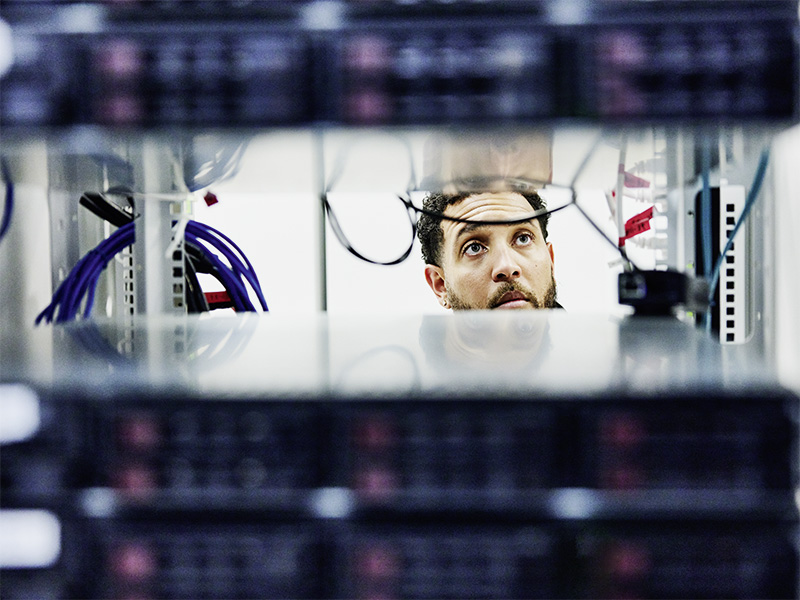
M&P is helping to build new living environments
Our way of life is changing. Strictly separating the workplace and living space is a thing of the past. As are conventional off-the-shelf construction solutions.

With digital planning expertise and a future-oriented mindset.
The construction and real estate industry is undergoing a profound change. Technological advances have altered the way we think about building, buying, selling and managing real estate, and the digital transformation continues to gain momentum – until it is abruptly halted on many construction sites. Our industry still lacks efficiency and innovation in many areas. What needs to change to make the industry more open to progress? M&P is trying to forge ahead: with digital planning expertise and a forward-looking mindset, we generate the greatest possible added value for real estate.
Action is needed in the construction and real estate industry: climate change, the energy crisis, a shortage of skilled workers and rising inflation require sustainable, efficient solutions in the buildings sector. Technological progress provides planners like us with many tools to drive change, and yet, progress is slow. Only a few of the more than 8,300 individual offices in the German planning industry have the capacity to handle major projects worth hundreds of millions.
First of all, it should be said that it is wrong to make standardisation in Germany a scapegoat for the innovation backlog. In fact, standardisation will pay off in the coming years. Fixed standards provide planning security, allowing companies to recognise and implement a trend at the right time in a regulated, functional environment – and to turn a good process into a good, digitised process. Rome wasn’t built in a day!
But with that in mind, what are the main reasons for the lack of innovation in our industry?

Many real estate companies are struggling to keep up with the rapid changes in digital technologies. This is partly a generational matter: young engineers move around in a three-dimensional planning environment as confidently as they would in a computer game – with learned viewing and operating habits.
In that regard, older professionals have some catching up to do. Rather than picking up new tools, they use traditional methods and systems that no longer meet the requirements of the market. They tread water. M&P, on the other hand, is heading towards the future – using the possibilities of technology to generate added value. We are adapting and testing digital tools and putting them into practice in order to become one of the innovation drivers in the industry.
Two of these innovations, Spacemaker, an intuitive piece of software for BSE planning, and IMERSO, software for process-optimising 3D scanning, can be found on pages 56 and 57 of this yearbook.
We are also state of the art when it comes to digital building automation, which is vividly illustrated by our employees in the Überseequartier project in HafenCity Hamburg (page 54 of this yearbook).
Many companies do not invest enough in research and development or the education and training of their employees. But exactly that is worth its weight in gold in practice: for example, our engineers use an automated labelling system developed internally at the M&P Group for construction plans, which is supported by a rule-based algorithm. This aligns individual label fields with each other and ensures that content is not overlaid or overwritten. In this way, M&P accelerates an everyday work process by 90% and reduces the error rate to a minimum. Smaller planning offices in particular often lack the financial means to further develop processes, but they can benefit from the digital expertise of others – for example with the engineering cloud of our partner ACS, which uses the service to provide a digital platform for modern building information modelling.

As shown above, there are already many methods available to resolve the innovation backlog in the planning industry.
One thing is clear: the lack of efficiency and innovation is a serious problem that needs to be tackled quickly if we are to make the market more competitive, meet the needs of customers and securely lead the construction and real estate industry into the future. It’s time for companies to proactively drive change in our industry. Just like M&P is doing.
The digitisation of the real estate sector is in an extremely poor position compared to other industries. The reasons for this are manifold and have already been addressed on the previous pages. Nevertheless, there are solutions – including those from the M&P Group. With many years of experience and proven expertise, we help digitise major companies in the industry throughout the real estate life cycle. The range of services extends from SAP and Microsoft solutions to BIM applications and Software as a Service. Here are some examples.

Project development
Property owners (or their representatives in asset management) develop projects in new buildings and, predominantly, in existing buildings. Our solutions for asset and property management provide support all the way from budgeting to project controlling. The project example from our client BNP Paribas represents an ERP solution based on the Microsoft Dynamics platform, while the solution for Düsseldorf Airport was implemented using SAP. You can read the technical papers on pages 86 and 90 in the yearbook.
Planning
The M&P Group has invested a lot in the development of planning tools in line with the BIM philosophy. In the meantime, we have gained extensive project experience and developed our competencies. In cooperation with ACS Solutions GmbH, we have collated these competencies in the Engineers Cloud and use it to offer project partners and engineering service providers a service model BIM platform. You can find more about this in the yearbook on page 84.
Construction
The digitisation of construction sites offers just as much potential for engineering service providers as it does for companies specialising in building construction and technology. The BIM approach in particular provides opportunities in this regard, because knowledge of the digital twin makes it possible to rethink workflows. For example, suspensions for energy and building technology can now be produced by robots ‘overnight’ on the basis of our BIM planning, while object monitoring in the cloud allows online comparison between the BIM model and the construction progress on-site. You can read more about this in the yearbook on page 48.
Operation and use
The most important FM service providers, as well as a large number of well-known real estate owners, rely on management and controlling solutions from the M&P Group. These solutions are based on both state-of-the-art SAP platforms and Microsoft’s latest products. In this context, real estate service processes are fully digitised in an end-to-end approach. Pages 98 to 101 in the yearbook provide information on possible solutions.
Conversion and refurbishment
This is where we come full circle to project development. Whether driven by changes in or expansions of use, renovation needs or ESG initiatives: perfectly equipped, space-optimised projects with comprehensible budgeting are developed. Read our article on page 28 in the yearbook.

Our way of life is changing. Strictly separating the workplace and living space is a thing of the past. As are conventional off-the-shelf construction solutions.

Saving resources and fossil fuels is a win-win situation thanks to M&P.

Highly efficient and flexible usage concepts from M&P.